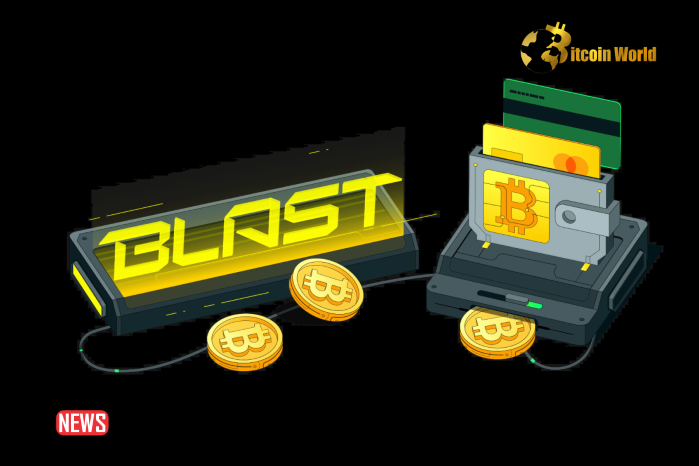Is Blast Network, the Ethereum layer-2 scaling solution, on the verge of collapse? Recent data reveals a concerning downturn in its key performance indicators, raising serious questions about its long-term sustainability. Let’s dive into the details of what’s happening and what it means for the future of this network.
What’s Behind Blast Network’s TVL Plunge?
The Total Value Locked (TVL) in Blast Network has experienced a significant drop. To be precise, it plummeted by a staggering 62% from its peak. This decline follows a reported $300 million liquidity loss in early August. A decrease in TVL signals reduced confidence and participation within the network, as users withdraw their assets.
User Exodus: Why Are Daily Active Users Leaving?
Compounding the TVL woes is a sharp decrease in daily active users. As of August 18, the network recorded only 27,800 daily active wallets. This is the lowest number since Blast began its expansion in late February. This figure pales in comparison to competitors like Base and Arbitrum, which boast 740,000 and 360,000 daily active wallets, respectively. The user decline suggests a growing dissatisfaction and a shift towards alternative platforms.
Several factors contribute to this user exodus:
- Problematic Airdrop: The airdrop in June was not well-received, leading to disappointment among users.
- Growing Dissatisfaction: Users and developers express increasing concerns about the network’s performance and community engagement.
Project Exodus: Is Pacmoon Leading the Way?
The departure of prominent projects further exacerbates Blast Network’s challenges. Pacmoon, the largest meme coin on the network, is actively seeking alternatives. Lamboland, representing Pacmoon, criticized Blast for its lack of community and cultural engagement, stating:
“Blast failed to address these crucial aspects and built a system that focused on token creation without providing necessary social support.”
This criticism highlights a fundamental issue: the importance of community and cultural relevance in the success of a blockchain network. Without these elements, even innovative technology can struggle to gain traction and retain users.
Launch Approach Criticisms
Blast Network has also faced criticism regarding its launch approach. The bridge feature, which initially prevented users from withdrawing their funds for an extended period, caused considerable frustration and distrust.
Blast Network vs. Competitors
How does Blast Network stack up against its competitors? Let’s take a look at a quick comparison:
| Network | Daily Active Wallets |
|---|---|
| Base | 740,000 |
| Arbitrum | 360,000 |
| Blast Network | 27,800 |
The numbers speak for themselves. Blast Network lags significantly behind its competitors in terms of daily active users, indicating a need for substantial improvements to attract and retain users.
What Does the Future Hold for Blast Network?
The challenges facing Blast Network are significant, but not insurmountable. To regain traction and ensure long-term viability, the network needs to address the following:
- Improve Community Engagement: Foster a stronger sense of community and cultural relevance.
- Address User Concerns: Actively listen to and address user feedback and concerns.
- Enhance Network Performance: Optimize the network for speed, reliability, and user-friendliness.
- Re-evaluate Launch Strategy: Learn from past mistakes and adopt a more user-centric approach.
The road ahead will be challenging, but with the right strategies and a renewed focus on community and user satisfaction, Blast Network can potentially turn the tide and reclaim its position in the competitive Ethereum layer-2 landscape.
Disclaimer: The information provided is not trading advice, Bitcoinworld.co.in holds no liability for any investments made based on the information provided on this page. We strongly recommend independent research and/or consultation with a qualified professional before making any investment decisions.


